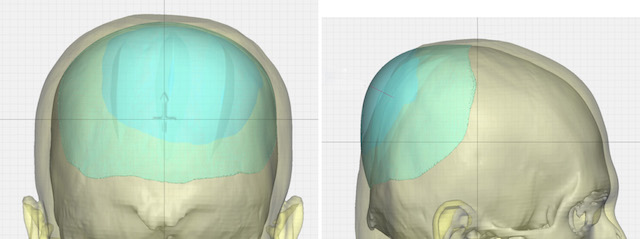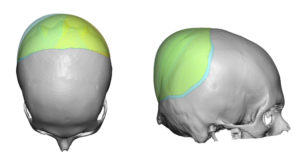Background: Plagicephaly is as general term that refers to cranioscoliosis or a twisting of the skull’s normal oblong shape. While its effect is usually present on both the front and back of the skull, one of these surfaces usually dominate. Typically the back of the head or the occiput is more severely affected. It is a far more common concern in men because of their obvious shorter hair styles where such head shape abnormalities are more easily seen.
The ideal approach in adults for occipital plagicephaly treatment is a custom designed skull implant made from the patient’s 3D CT scan. By making a computer design by building out the flatter side by comparing it to the opposite fuller side is a sound approach to achieving improved occipital bone asymmetry. But despite equalizing the two sides of the occiput, some patients will not experience complete or near perfect occipital symmetry. I have seen this several times and it suggests that there must be a soft tissue element to the asymmetry as well.
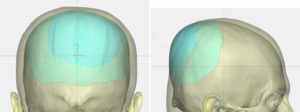
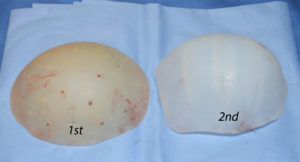
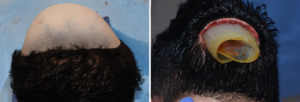
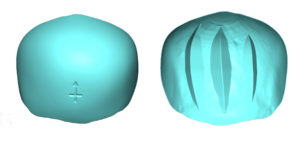
When making a custom skull implant for occipital plagiocephaly I often ponder whether it should be designed in a modest overcorrected fashion to compensate for any overlying soft tissue deficiencies. This is of particular interest in the male who shaves his head or has a very closely cropped hairstyle where every aspect of the augmentation can be more fully appreciated. The over corrected design seems less important in patients with good hair camouflage so a symmetric design is usually done…although this case proves that the symmetric design does not work for everyone.
Case Highlights:
1) Asymmetry of the back of the head (plagiocephaly) is most effectively treated by a custom occipital skull implant.
2) The use of a small low occipital scalp incision for its placement can heal in a near or completely inconspicuous manner.
3) A second custom occipital implant can be done if some minor asymmetry still persists through the same scalp incision.
Dr. Barry Eppley
Indianapolis, Indiana

